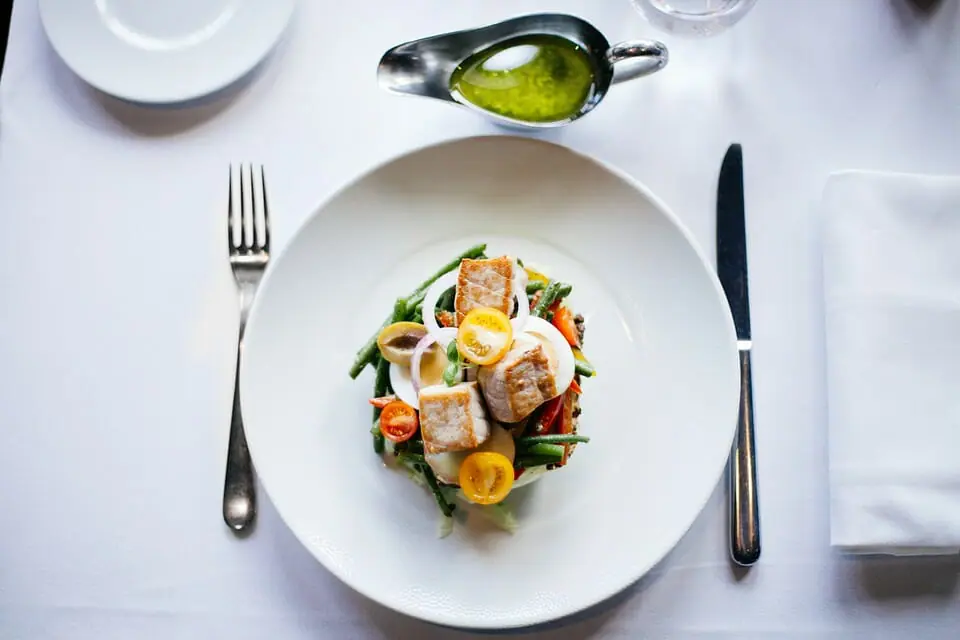Stocks are like culinary building blocks. Soups, stews, gravies, sauces, rice, polenta, beans, and vegetables can all be cooked in stock for enhanced flavour and nutrition. Stocks capture nutrition that would otherwise be wasted and produce useful by-products, such as meat and fat. In this recipe, I produce white chicken stock and use the leftover meat to make chicken salad for sandwiches.
Ingredients
A good stock should be neutral in flavour. A stock adds body and depth to the flavours created by a recipe. Its neutral—not bland—characteristics allow it to quickly take on flavours, rather than absorbing them, and adapt to the dish. I use chicken parts in this recipe because they are inexpensive, readily available in grocery stores and produce a large quantity of meat. Farmers’ markets sell chicken carcasses for as little as $2.50/lb, or wings for $5.75/lb. Stocks extract the essential flavour and nutrition of an animal, and one should use quality ingredients wherever possible. This recipe will produce any kind of white stock except fish. If you have access to a farmers’ market, try using duck carcasses and save the refine fat for finishing vegetables and potatoes.
500g chicken wings
1L water
50g mirepoix (¼ cup onion and 2tbs each carrot and celery or celery root cut into medium dice)
Pepper (preferably whole, 2 peppercorns or 1 pinch)
Thyme
Rosemary
1 clove garlic (whole)
½ bay leaf
1 parsley stem
Fine mesh strainer (available at Dollarama for $2.99)
Directions
Chicken Stock
- Rinse the chicken parts then place in a pot, cover with the cold water, and bring to a low simmer. Cold water is important because it draws out impurities from the chicken as it warms, aiding in the clarification process. Once the water begins to simmer, the impurities will coagulate and float to the surface where they can be skimmed off. Thorough skimming at this point is critical for the production of a clear stock with good flavour. Do not allow the stock to boil. This causes the fat and impurities in the stock to emulsify with the water resulting in an off colour and taste.
- Once the water has begun to simmer and the impurities have been skimmed off, add the mirepoix and seasonings to the stock. Do not add salt. Unsalted water helps draw out flavour and nutrition from the chicken due the osmotic imbalance created by the salt content of the chicken. For seasonings, use a small pinch of each ingredient. The parsley stem is not necessary but a good addition if available.
- Gently simmer the ingredients for 3-4 hours, uncovered, skimming occasionally. Do not stir. This will dislodge any impurities stuck to the sides of the pan or the ingredients. It may be necessary to gently add more water to the stock during the cooking process to replace the water that is lost by evaporation. Once the stock is ready, ladle or gently pour it through a fine mesh strainer, cool to room temperature, then refrigerate. Once the stock is cold, remove any fat that has solidified on the surface of the stock.
Chicken Salad
- Once the wings or chicken parts used to make the stock have cooled enough to handle, pick through them to remove any bits of meat before discarding the rest.
- Cut this meat into small pieces and allow to cool thoroughly. Add mayonnaise and a small amount of whole grain mustard. Add some diced celery or celery root and season with salt and pepper.
Note: The recipe for potato salad is essentially the same. Cook the potatoes until they are still slightly firm, drain, cool, then add the remaining ingredients along with a small portion of diced green or red onion. Hardboiled egg can also be added along with bacon bits for a more substantial meal.


Recent Comments